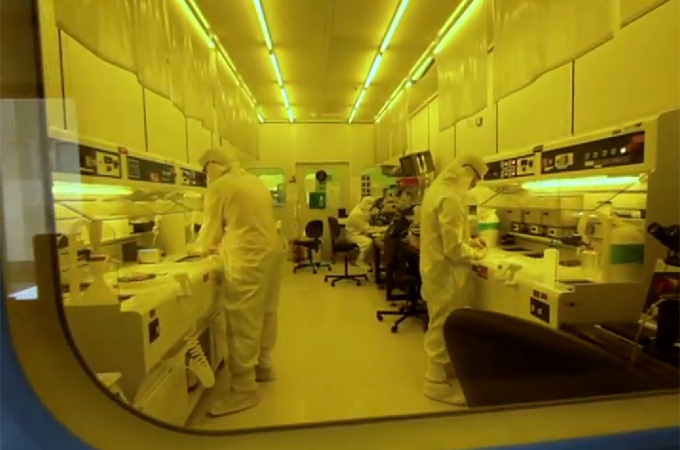Polonium: A silent killer
The element goes undetected by most radiation detectors but when it is found, it can leave a trail to its origin.

It has been used to kill a Russian former secret agent in a London hotel bar and is believed to have caused the death of several scientists, but despite the media attention it has drawn in recent years, only a few people have died from polonium poisoning.
The radioactive element was discovered by Marie Curie in the late 19th Century. It was relatively unknown for over a century, but is now notorious for its ability to kill.
In some ways it is the perfect poison. Not only does the radioactive element go undetected by the most commonly used beta and gamma radiation detectors, its effects on humans is also difficult to diagnose, making it an unobtrusive, even insidious toxin.
Keep reading
list of 4 itemsParallel economy: How Russia is defying the West’s boycott
The Kung Fu Nuns of Kathmandu
Myanmar Army on the Ropes
There is tremendous secrecy surrounding the medical files of those who have purportedly died from exposure to the substance.
Despite that, medical evidence, witness reports and leaked diplomatic cables suggest that, in addition to the late Palestinian leader Yasser Arafat, several others have also died due to polonium.
Russian spy
The most famous case in recent memory involved Alexander Litvinenko, a Russian secret service agent turned dissident who lived in exile in the UK.
Litvinenko, a long-time adversary of the Russian president, Vladimir Putin, died in London on November 23, 2006. He fell ill earlier that month, shortly after a meeting with two former KGB agents in a bar of London’s Millennium Hotel.
The agents are said to have poisoned him by slipping polonium-210 into his tea.
 |
| Alexander Litvinenko several years before he fell ill after being poisoned with polonium-210 [AP] |
Litvinenko was taken to hospital and initially suffered from severe diarrhoea and vomiting. The doctors diagnosed him with a stomach infection.
As his condition worsened, his white blood cell count plummeted, making him susceptible to infection.
“His skin had turned yellow, indicating liver dysfunction, and he was tested for the two most likely causes, hepatitis and Aids, but neither was the case,” John Emsley wrote in Molecules of Murder, which includes a chapter on polonium poisoning. “Then his hair began to fall out.”
Doctors eventually decided that Litvinenko was suffering from radiation poisoning, and further tests identified polonium as the culprit.
Polonium-210 was later found at a number of London sites the late spy had visited, as well as in two British Airways planes that flew the Moscow-London route.
His medical records were never released to the public, preventing the data in the case from being used for comparison with other possible polonium poisonings.
Accidental exposure
The first person believed to have died of polonium poisoning was Irene Joliot-Curie, the daughter of scientist and chemist Marie Curie, to whom the discovery of polonium is attributed.
Like her famous Nobel Prize-winning mother, Irene Joliot-Curie, earned her fame in science and shared the Nobel Prize for chemistry with her husband in 1935 for the discovery of artificial radioactivity.
Joliot-Curie spent her life researching radioactivity and other dangerous materials, but it came at a high price.
In 1946, Joliot-Curie was diagnosed with leukaemia.
She has been exposed to polonium in an incident in which a capsule containing the element had burst in her laboratory. It resulted in a long period of sickness, after which she eventually died in France in 1956.
The French scientist lived long enough to see her mother’s discovery put to use by allied forces in World War II, in their race to build nuclear weapons.
Polonium was used as a trigger for the Fat Man bomb dropped on Nagasaki in 1945. It later became a crucial element for other nations striving to “go nuclear”.
Israeli deaths
In his book The Bomb in the Basement: How Israel went nuclear and what that means for the world, Israeli journalist Micheal Karpin writes about a 1957 radioactive leak at the Weizmann Institute, Israel’s leading research laboratory operated by the Atomic Energy Commission (AEC) south of Tel Aviv.
In what is believed to be Israel’s first nuclear accident, several scientists working in the lab were contaminated with polonium and later died of cancer.
 |
| Scientists at work in the modern day Weizmann Institute south of Tel Aviv [YouTube/Weizmann Institute] |
According to Karpin, professor Dror Sadeh, who headed the laboratory, used polonium-210 to research the energy levels of radioactive materials.
The Weizmann Institute failed over a long period of time to measure radiation levels in the lab, which was eventually found to be contaminated.
“Traces of radioactivity were found on Sadeh’s hands, and on objects he had handled at the home he and Haya [his wife] had rented at kibbutz Naan, near the institute,” Karpin wrote.
Following the leak, the laboratory was closed and results of the investigation conducted by the AEC into the incident were kept secret, even within the institute.
Only a month after the lab was closed, one of the students working there died of leukaemia.
Professor Yehuda Wolfson, Sadeh’s direct supervisor and professor Amos de Shalit, the department’s director, both died of cancer a few years later.
According to Karpin, Sadeh, also contracted cancer and died prematurely, though no direct link to polonium-210 was ever officially confirmed.
This is the overarching enigma of polonium.
While modern instruments can help detect the element itself, death due to polonium’s toxicity is difficult to establish.
The element is only possessed by certain states, nuclear elites, making it traceable. So it is not the ideal tool for political killings.
Polonium takes nuclear capability to develop and considerable scientific know-how to handle safely. It is by no means a poor man’s poison.
Follow David on Twitter: @DavidPoort